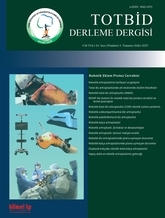
Total knee arthroplasty (TKA) is a common and effective surgical procedure, particularly for reducing pain and improving quality of life in patients with advanced-stage knee osteoarthritis. However, 8-14% of patients have reported dissatisfaction after surgery. Alignment techniques used during TKA play a significant role in this dissatisfaction. The classical approach, mechanical alignment, involves positioning the femoral and tibial implants perpendicular to the mechanical axis in the coronal plane. This aims to create a straight limb alignment and improve implant longevity. However, with modern implant materials and advanced techniques, this method is increasingly considered insufficient for personalization. Newer techniques aim to achieve more physiological knee motion by considering patient-specific anatomy. In this context, various alignment strategies have been developed and evaluated. The objective is to summarize and assess alignment techniques to achieve ideal component positioning in total knee arthroplasty.